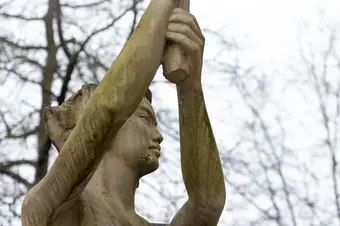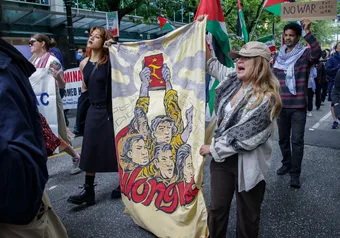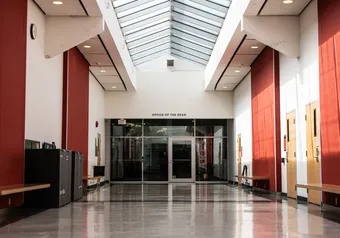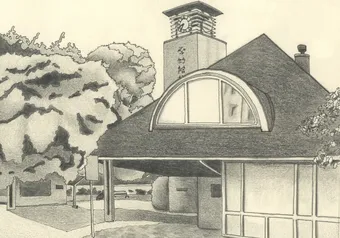Several community members want the AMS to restore the neglected Goddess of Democracy statue located between Brock Hall and the Nest.
The Goddess of Democracy statue on campus is a life-size copy of the original ten-metre-high papier-mâché and styrofoam statue created during the 1989 Tiananmen Square protests and massacres.
A month into the Tiananmen protests, Beijing art students constructed this statue in defiance of the Chinese government’s actions and hopes of greater political freedom. Although the statue stood for less than a week before being destroyed by soldiers, it became a global symbol of resilience. Today, many replicas of this statue exist around the world. Internet posts related to the Tiananmen Square protests are often removed due to tight censorship laws in China, but the replica statues serve as physical reminders of this event.
Officially, the statue is maintained by the AMS. 2017/18 AMS President Alan Ehrenholz stated that cleaning the statue was “on the agenda.”
Current AMS President Cole Evans said the AMS last maintained the statue in the 2019/20 year, when “it was professionally power washed after the AMS Grad Class Gift contributed up to $5,000 towards its cleaning.”
“The AMS would be more than happy to work with community partners on ensuring that the Goddess of Democracy remains in the best condition possible,” he wrote. However, Evans said the next cleaning of the statue may be postponed until after the construction of the new Student Recreation Centre because the statue might be moved during this period.
Alexandra Wrage, a UBC campus resident, told The Ubyssey that this statue needs to be maintained, especially due to the ongoing, global “struggle for democracy."
“We're in the middle of a brutal invasion of Ukraine, And here we have a monument to democracy right on the grounds of UBC that is really neglected.”
Wrage remembers being a student during the Tiananmen Square protests. She said she watched in horror as students were killed for something she took for granted.
“Each time something like that happens, because it does seem to happen over and over again in different places, you think democracy needs to be protected, it needs to be fostered,” she said.
Mark Stubbs, another resident on the UBC campus, said he vividly remembers the 1989 protests when he visited Beijing shortly after the massacre.
“I saw fresh tank marks on the roads, countless bullet holes in nearby buildings and trees, spent shell casings and dried blood that had yet to be cleaned or washed away by rain,” he said.
Stubbs said that with few democratic symbols remaining in the world, it is becoming increasingly important that “we not forget these brave students, what they stood for and how they were imprisoned, disappeared and killed.”
The Chinese University of Hong Kong recently tore down its Goddess of Democracy statue due to China’s strict national security law which is currently being used to jail democracy campaigners and suppress civil society in the city.
“Over the years, the statue has become cracked, faded and is in need of repair. It should be maintained properly and regularly to honour the students who died in Beijing in 1989,” said Stubbs.
First online
Share this article








